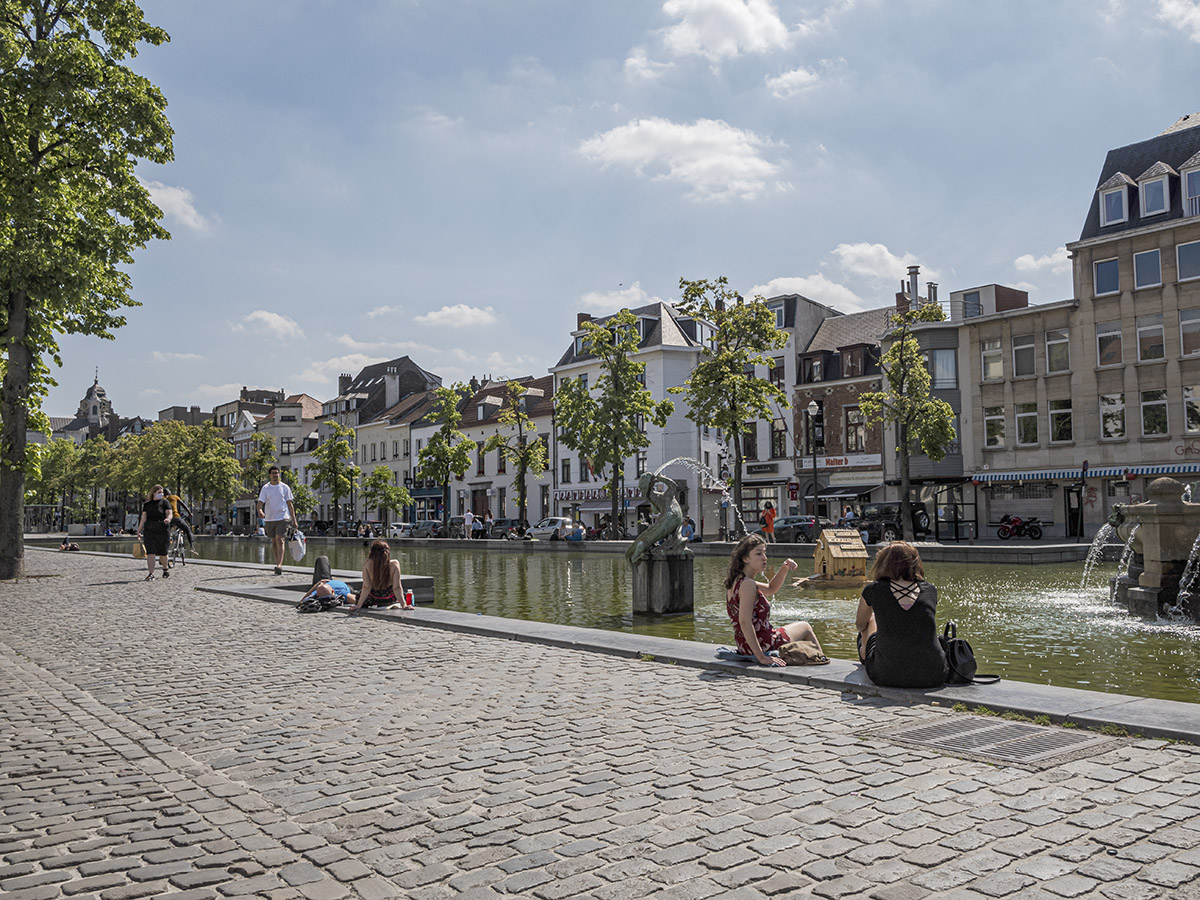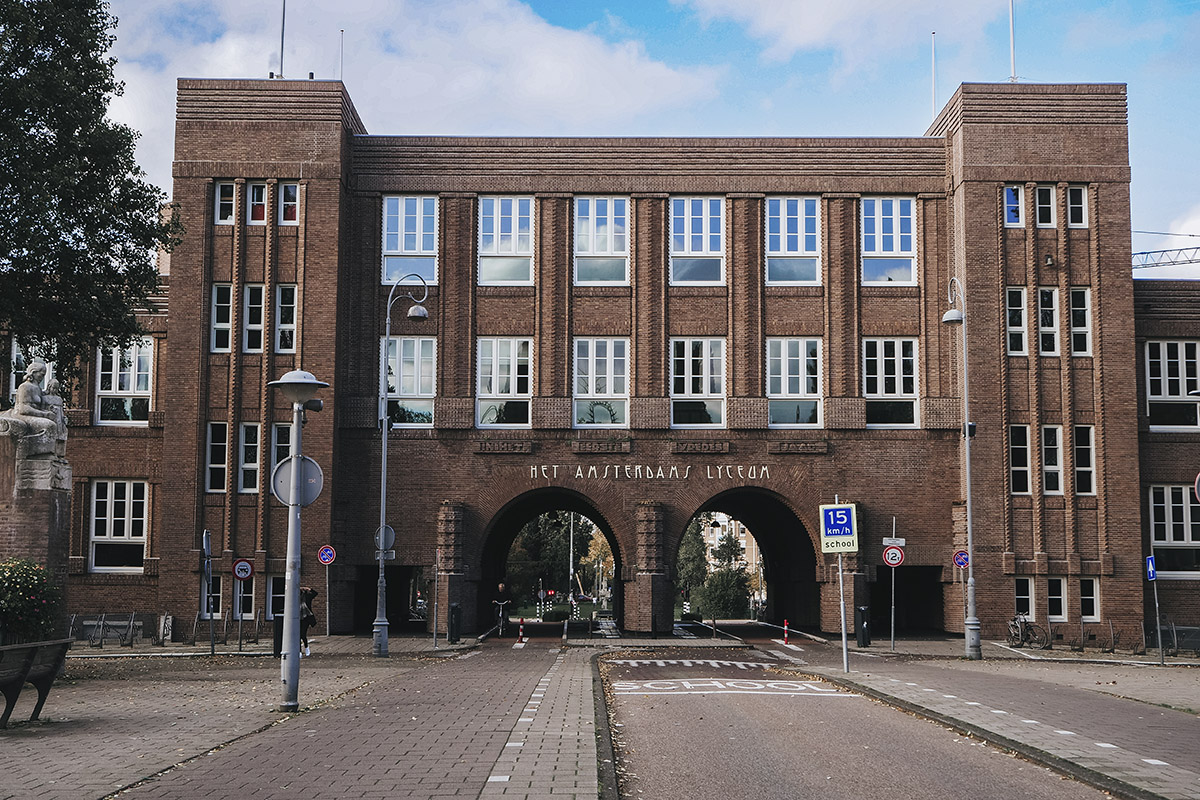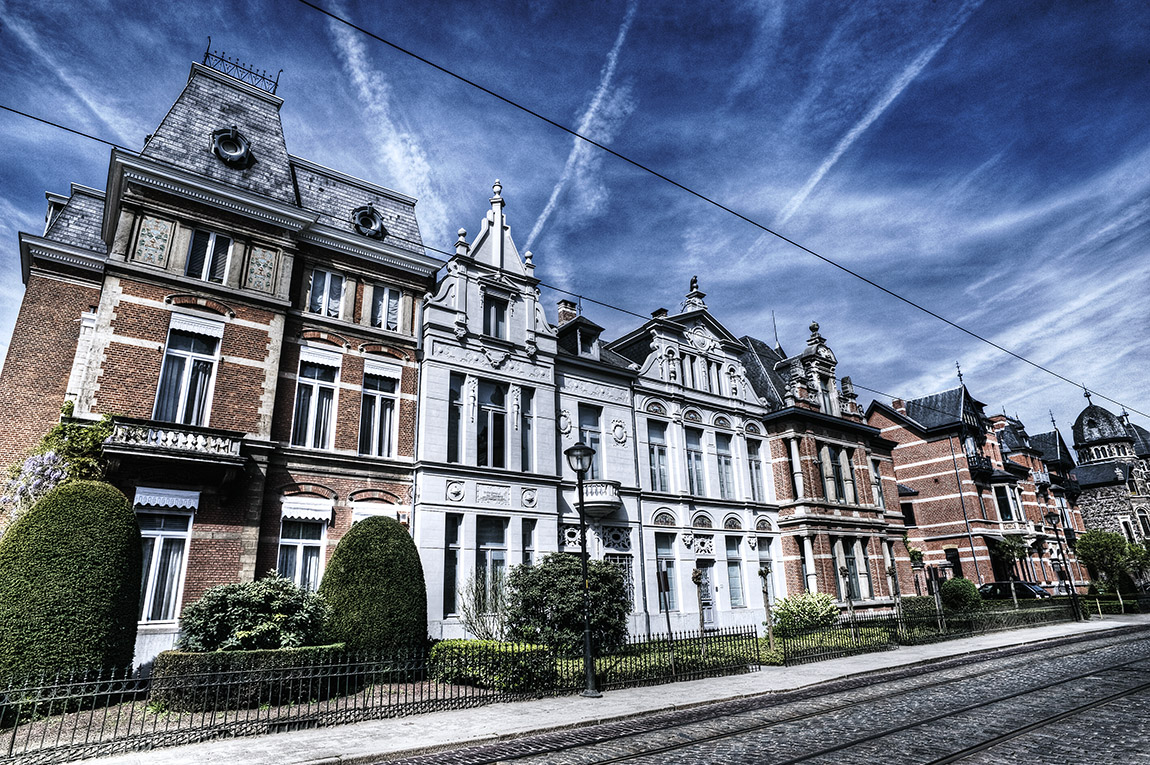48 Hours in Luxembourg City
TEXT: DANA MARIN
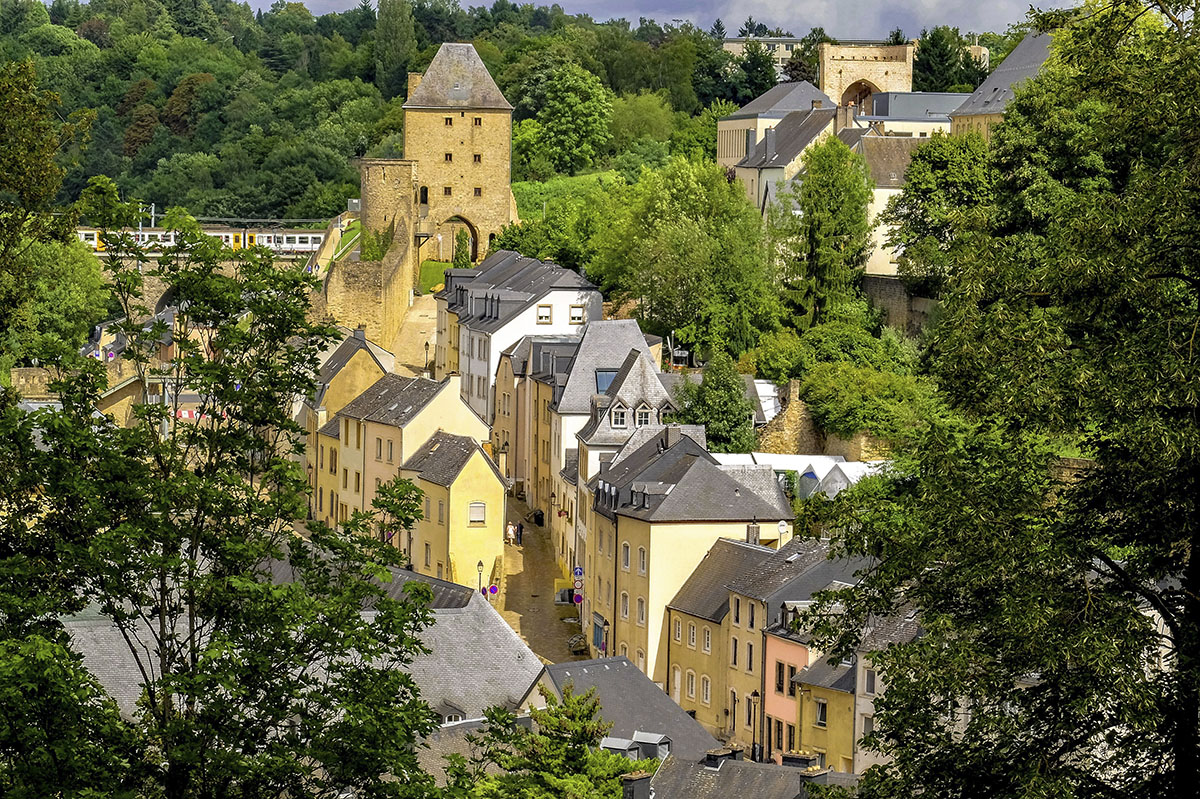
Grund neighbourhood has a village feel to it. Photo: Pixabay
Nestled in the heart of western Europe, in a tiny fairytale-like country, Luxembourg City offers a blend of rich history, modern architecture and a relaxed atmosphere. This layered city, unfolding on hills and ravines, is perfect for a short break and will charm you with its historic Old Town which is a UNESCO World Heritage Site, stunning architecture, underground tunnels and museums.
Day 1 – A trip down the history lane
Luxembourg’s defining characteristic is the contrast between modern and medieval. When visiting, you’ll want to explore both sides of the city.
On day one, step into the enchanting historic Old Town and prepare to travel back in time. Here, you can explore the cobblestone streets and alleys lined with quaint cafés and local shops. Luxembourg used to be the strongest fortress in Europe until its demolition in the 19th century. Many of its gates, forts and casemates still remain and can be visited nowadays.
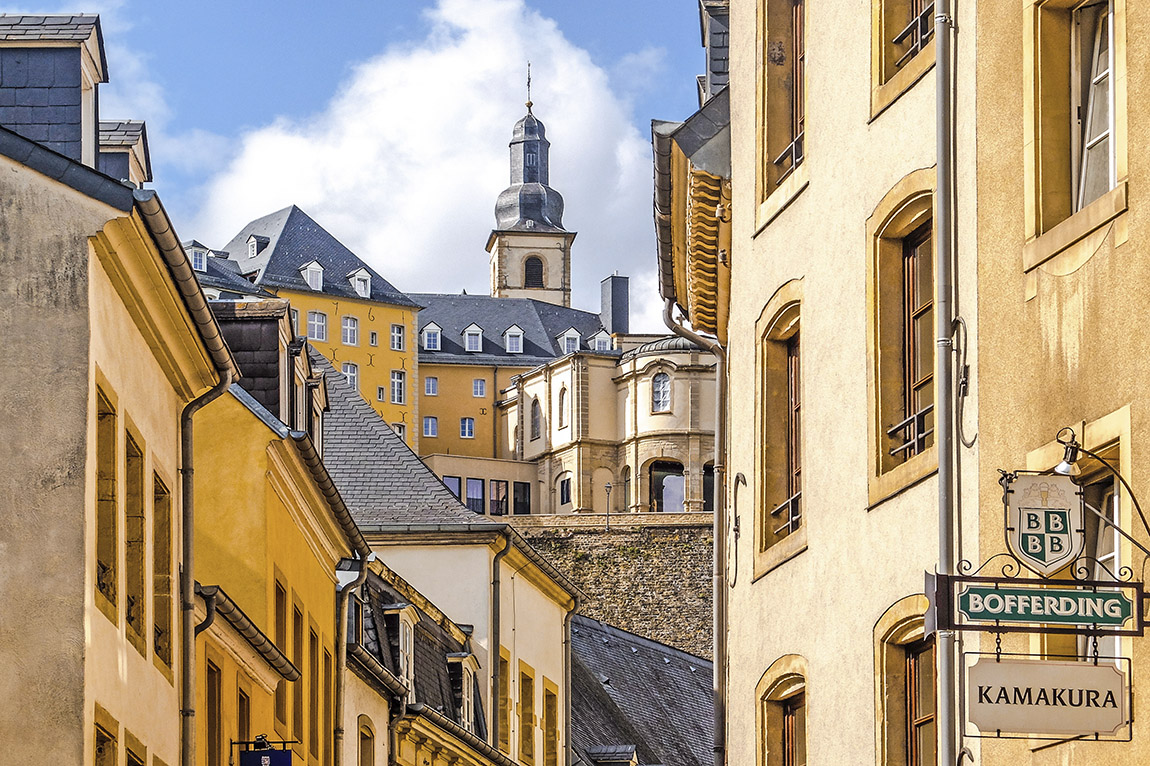
Narrow street in Grund. Photo: Pixabay
Start the day at Place Guillaume II, the main square of the city. In the past, this square was the site of a Franciscan monastery, which was gradually dismantled in the 19th century. Its materials were utilised in the construction of a new town hall. Today, this square hosts festivals, concerts and markets.
As you stroll through the Old Town, or ‘Ville Haute’, you’ll be surrounded by history and culture, with hidden gems at every turn. The best starting point for diving into Luxembourg’s history is the Grand Ducal Palace, the official residence of the grand-ducal family. The palace is open for tours during the summer months and showcases the rich history, culture and traditions of the Grand Duchy of Luxembourg.
Outside the summer season, you can visit the Luxembourg City History Museum instead. It displays permanent and temporary exhibitions that illustrate the history of the city, spanning more than a thousand years.
The Wenzel Circular Walk
After a lunch at one of the modern restaurants in the city, energy replenished, get ready for a long walk: the Wenzel Circular Walk. This scenic route takes you along many historical monuments telling the intricate history of the city of Luxembourg and will bring you to the lower part of the city, the picturesque Grund neighbourhood. Grund was the base of the former fortress and possesses a charming village atmosphere. The area’s historical remnants, such as ancient city gates and fortress walls, set against a magnificent natural backdrop, make the effort of walking well worth it. Some of the city’s landmarks included in the walk are: Chemin de la Corniche (offering a splendid view over the valley), Bock Casemates (an extensive network of tunnels that run several kilometres and span several stories, used for protection during the war), Neumünster Abbey and Alzette River. The Wenzel Walk takes about three hours and you can do it on your own or with a guided tour.
At night, the city comes alive with its illuminated buildings, adding an extra touch of magic to your visit. Enjoy the nightlife and taste some traditional dishes like ‘Judd mat Gaardebounen’ (national dish of smoked pork and broad beans) or ‘Bouneschlupp’ (soup with green beans, potatoes and bacon).
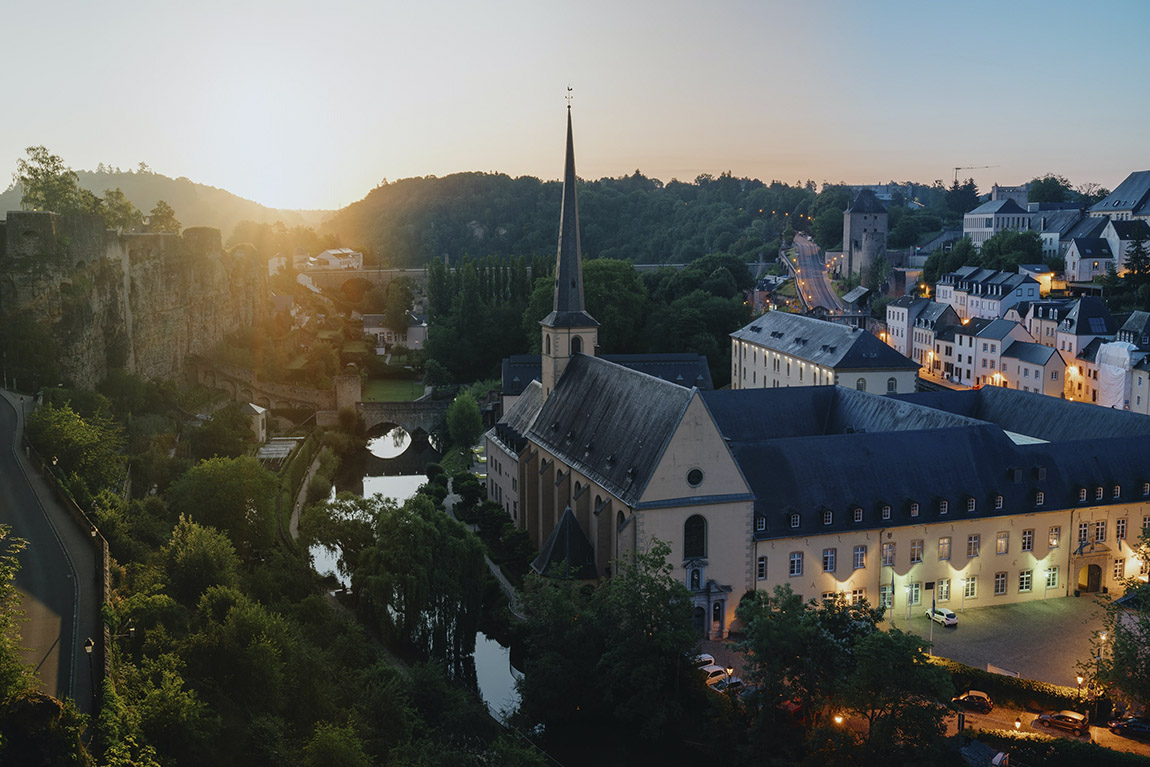
Sun setting over the Neumünster Abbey. Photo: Cedric Letsch
Day 2 Art, culture and nature
Luxembourg has numerous scenic vistas, and every day is the perfect opportunity to appreciate some of them. You can’t visit Luxembourg City without going for a ride in the Pfaffenthal Lift, a modern panoramic glass lift that connects the Pescatore Park to the Pfaffenthal district in the Alzette valley.
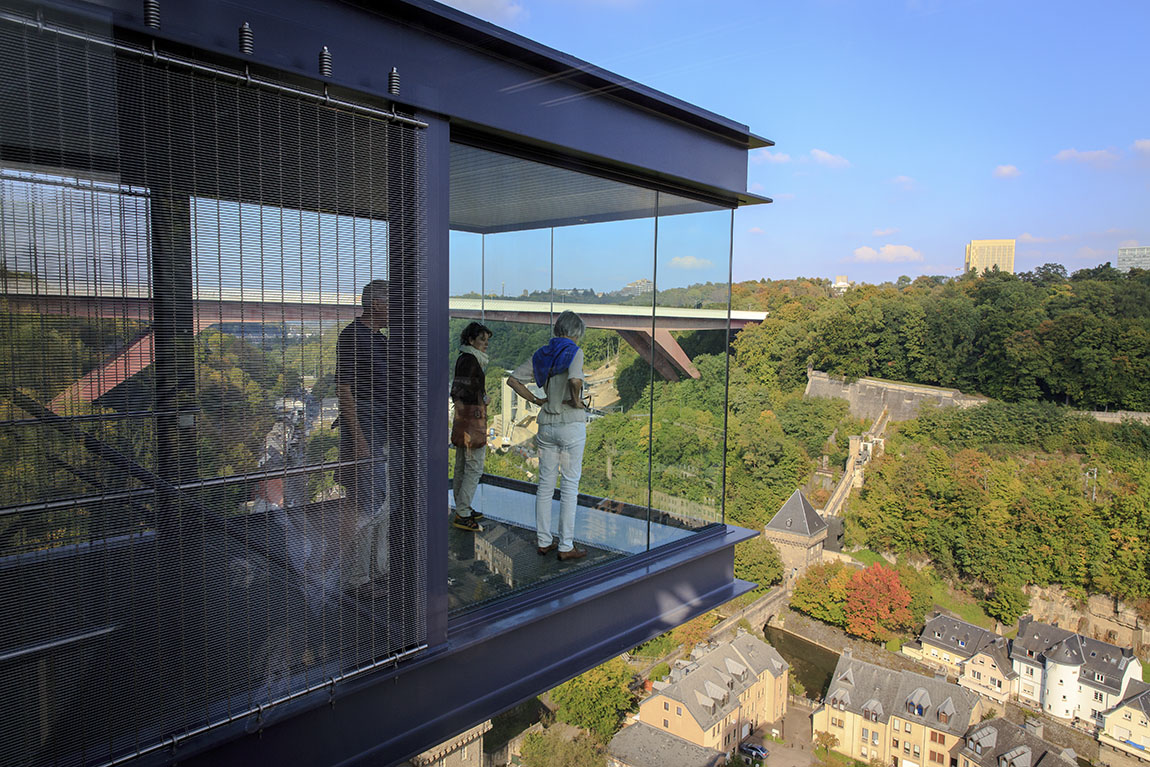
Pfaffenthal Lift, SCHWARTZ. Photo: Luxembourg City Tourist Office
Discover the modern part of Luxembourg, starting with a refreshing immersion in contemporary art at Mudam. Musée d’Art Moderne Grand-Duc Jean is a contemporary art museum, designed by renowned architect I.M. Pei. The museum features a collection of contemporary art from around the world, as well as rotating exhibitions and installations. The building itself is a work of art, with its striking geometric forms and use of light and space.
After your visit to Mudam, take a stroll through the Parc des Trois Glands to see historical landmarks such as Museum Dräi Eechelen, Porte du Grünewald and Fort Obergrünewald. These old buildings and ruins date back to the 1600s and offer a view into the history of the area.
Close to Mudam, in Place de L’Europe, you can admire the modern building of the Philharmonie (Concert Hall). On Saturdays, you can join a free guided tour. Better yet, why not buy a ticket and enjoy one of their concerts?
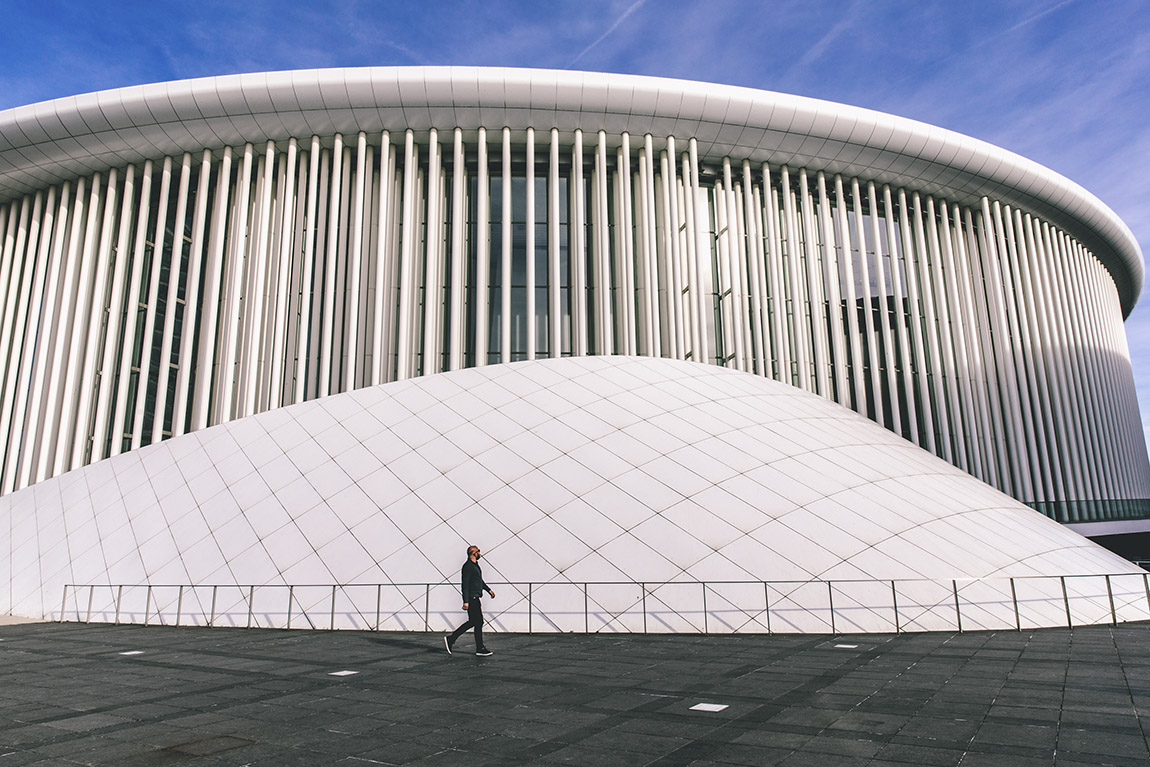
Luxembourg Philharmonie, Frame & Work. Photo: Luxembourg City Tourist Office
In the afternoon, head towards Place d’Armes for a little stroll through the shopping streets. When you have finished perusing the boutiques, stop for a quiet respite inside the beautiful Notre-Dame Cathedral, a Gothic-style building that was originally a Jesuit church. Not far from the cathedral, you can see the Gëlle Fra (‘Golden Lady’), a war memorial also known as the Monument of Remembrance.
End the day with a visit to the green Pétrusse Parks, a quiet oasis in the city and a great spot to admire the Adolphe Bridge, a double-decked arch bridge that had the biggest stone arch in the world at the time of its construction in 1903.
A 48-hour trip to Luxembourg City is a delightful experience that gives you just enough time to sample what the city has to offer. You will fall in love with this hidden gem of Europe and will soon be trying to convince all your friends to book a trip here!
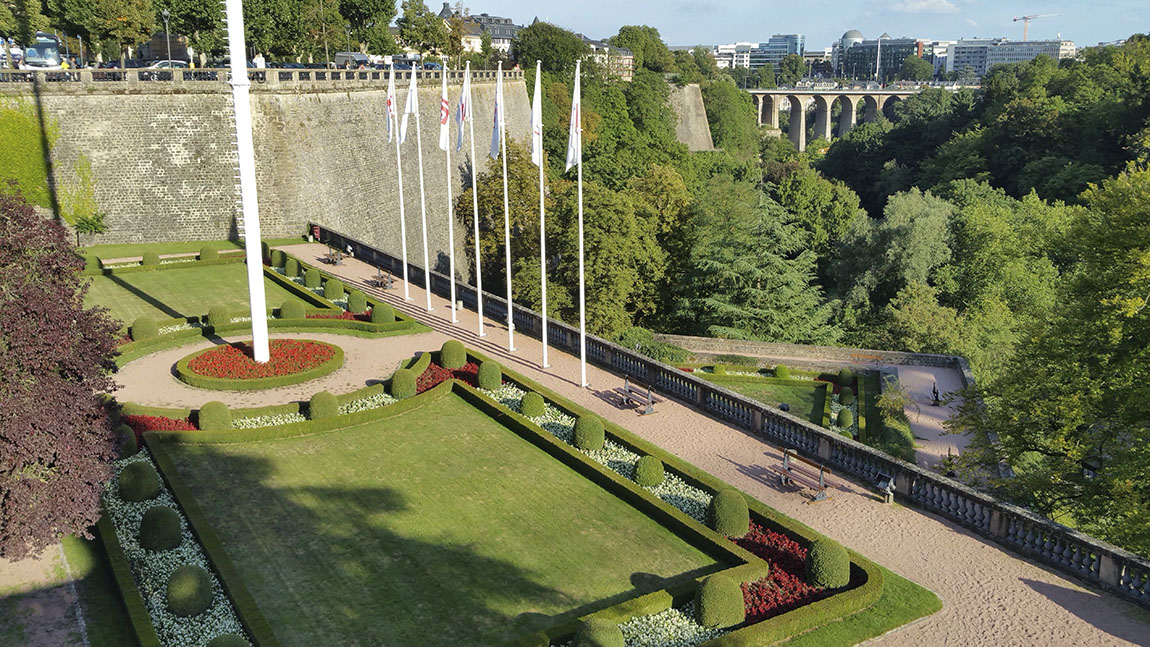
Pétrusse Parks, a quiet oasis in the city. Photo: Waldo Mig
Subscribe to Our Newsletter
Receive our monthly newsletter by email

